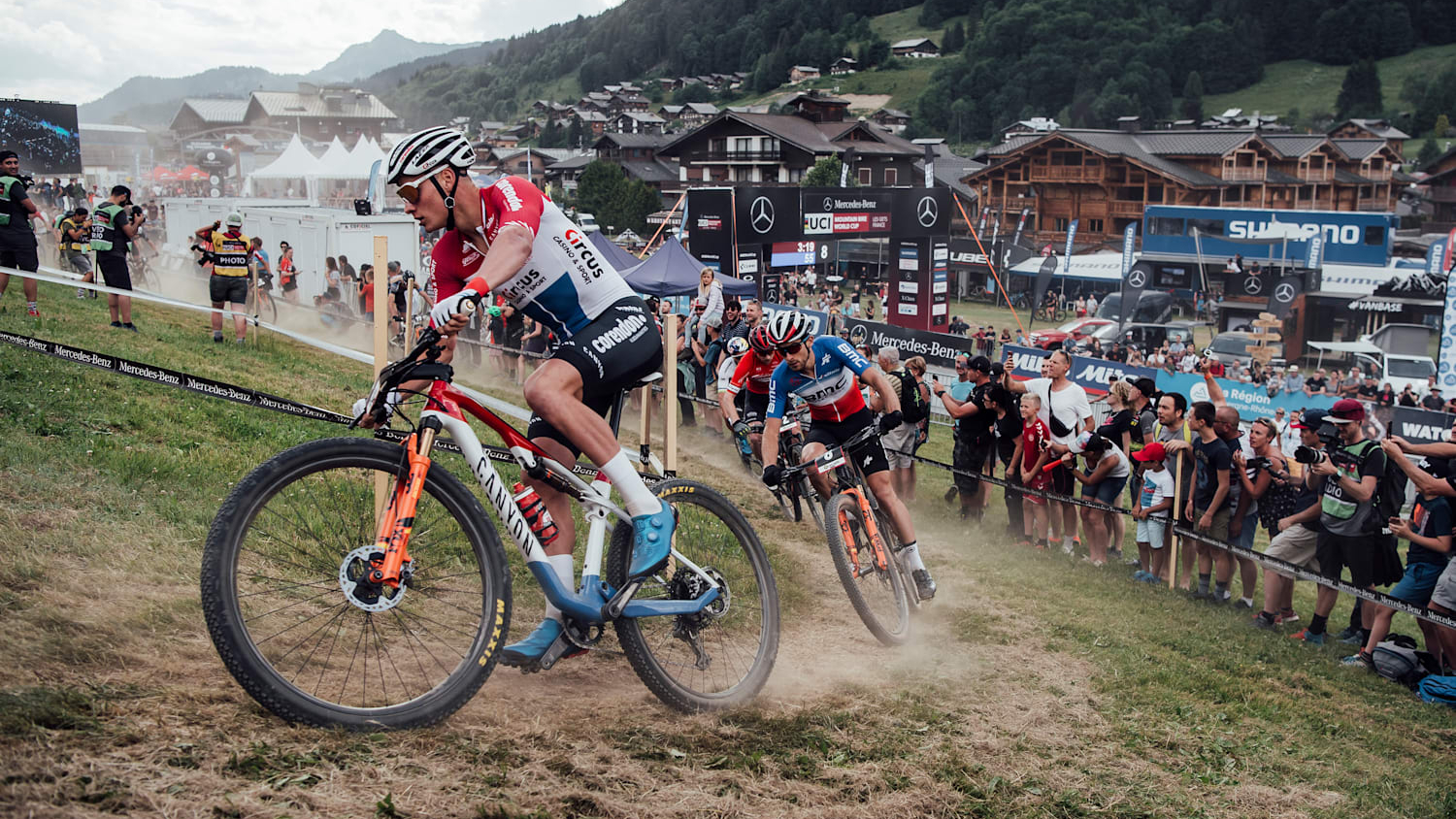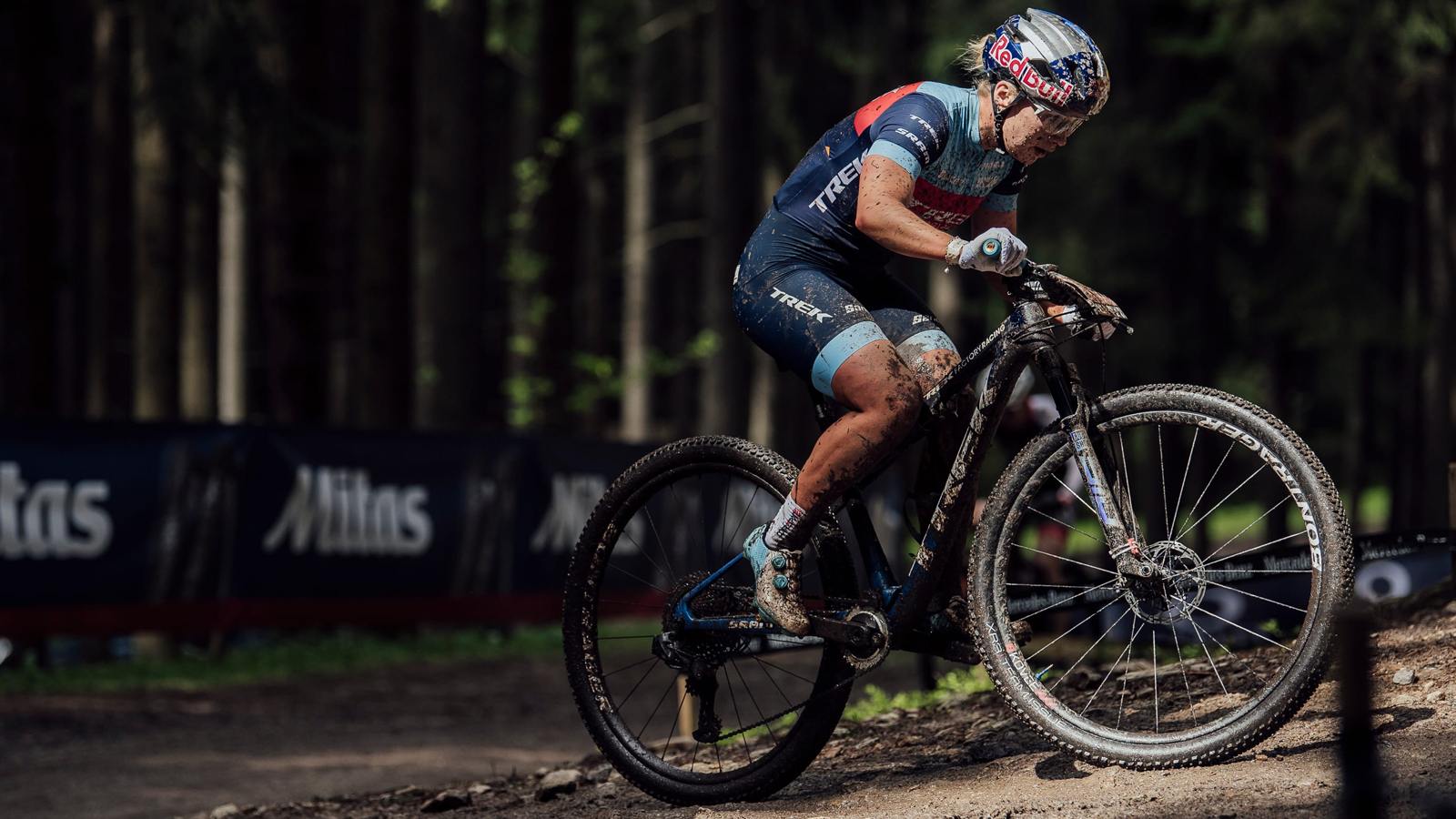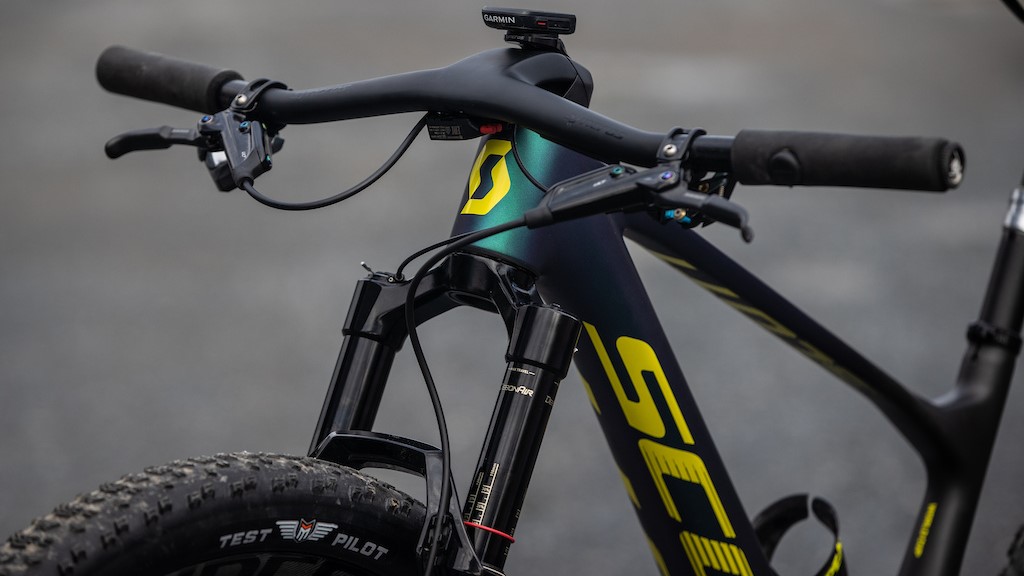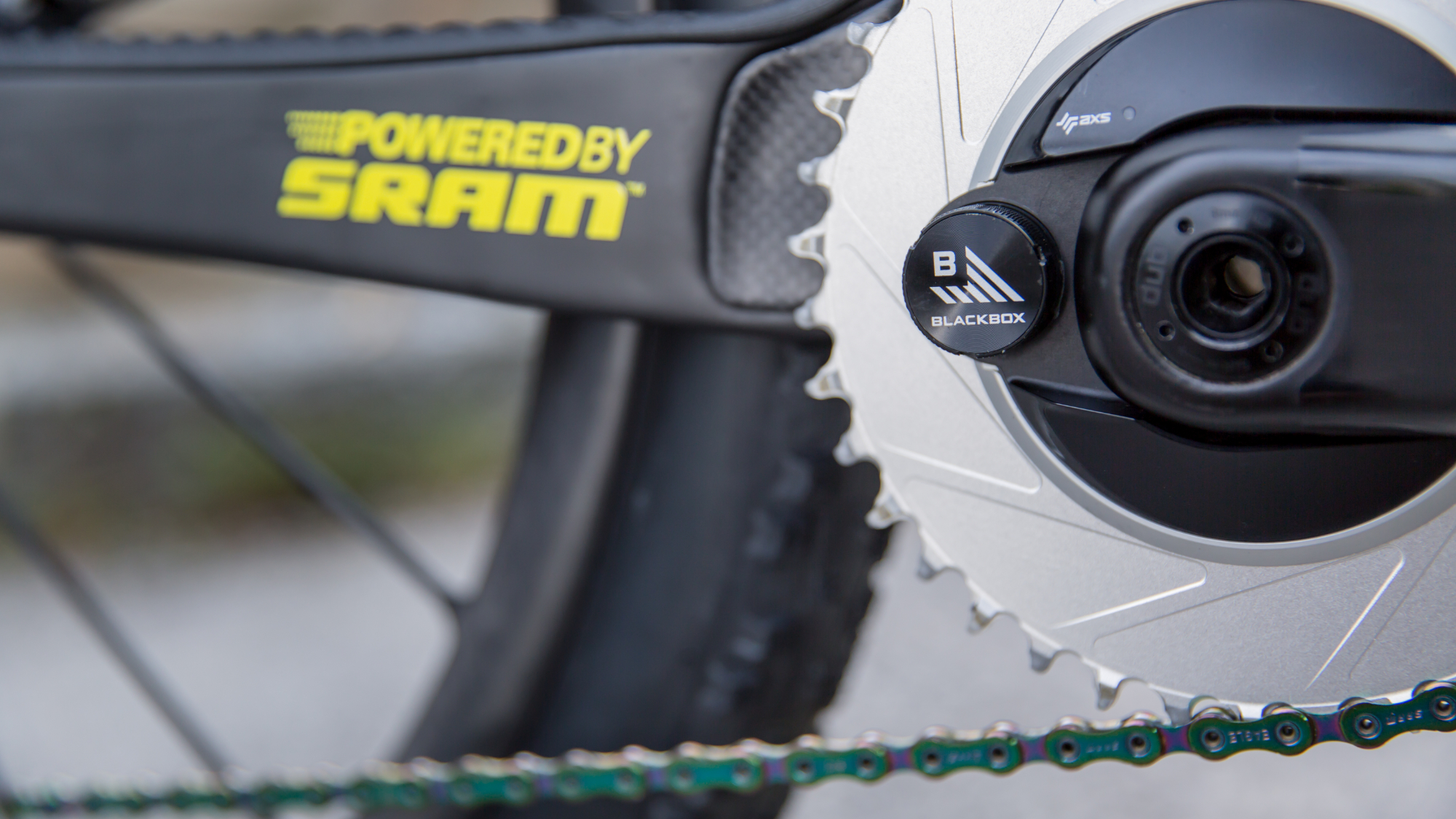Cross-country mountain bikes: Understanding their anatomy and design blueprints
We take a look at the key designs and components that make cross-country mountain bikes so fast off-road

XCO, or Cross-Country Olympic, is a multi-lap cross-country mountain biking race format that’s used for both the Olympic Games and the annual Cross-Country World Cup series. Cross-country mountain bikes are totally drool-worthy, with frames that can be lighter than their road-bike equivalents, and setups that are all about going bullet-fast.
Amazingly, these featherweight bikes have become ever more capable as courses get more technical and demanding, with riders opting for the best full-suspension mountain bikes to overcome these challenges. The 80mm of suspension travel seen six or seven years ago now has been bumped up to 120mm on the latest generation bikes. Let’s have a look at the typical ingredients of the XCO bikes that you’ll be seeing in Tokyo.
What is XCO?
XCO is a fast and furious format on moderately technical courses that typically feature plenty of tough climbs, fast descents and flat sections, and roots, rock gardens and jumps. Depending on the venue and the weather, courses can be dusty and super-fast, or muddy and slippy. Either way, they best reward a full hand of mountain bike skills – massive climbing ability, explosive speed and intuitive handling skills.
Races are no longer than 90 minutes – typically five to seven laps – and in the World Cup series, each is preceded a couple of days beforehand by a shorter, even faster and more furious ‘cross country short track’ (XCC) to determine the start line gridding order for the main race.
The six-race World Cup series has been gripping so far this year, and the Tokyo Olympic Games in July promises even more action. The Tokyo Olympic course is unusually technical, with tough drops, jumps, logs and plenty of rock gardens. It should be 100 percent rideable even though it defeated a number of riders in the test event.

How an XCO bike needs to ride
From the gun, XCO races are all about speed and position in the pack.
An XCO bike needs to be blisteringly fast on climbs and descents – and with more of an emphasis on climbs than in any other type of mountain bike racing. While some sections of the courses might be hard-packed dirt or tarmac, riders need their bikes to be super-capable on rock gardens and roots. And – depending on the rider – the bike’s got to be happy in the air.
Riders have to use the same frame and fork for the XCC and XCO race, so they can’t change between a hardtail for the faster, simpler XCC race and a full-suspension bike for the main event. But as we’ll see below, they can ditch non-essentials like dropper posts and power meters for the shorter race.
It’s fair to say that World Cup and Olympic cross-country riders aren’t like you and me: their skill and their need for speed mean that they can ride much more uncompromising machines.
As we’ll see when we explore the anatomy of cross-country mountain bikes below, XCO racers like to get low over the front of the bike for better climbing and a more aggressive attack position. The geometry of the bikes makes them super-agile for stealing the smallest of overtaking opportunities or hammering technical sections at pace. But agile can also be described as twitchy and unforgiving, meaning the riders’ ability to pick perfect lines and float over sections is vital on technical descents.
You might expect that they would consider compromises on durability for the sake of weight – as long as the parts last for a race – but the truth is even the lightest pro-level components are as tough as anything you or I might use for general XC riding, they just cost more.

Components of an XCO bike
Most XCO riders choose between a superlight hardtail or a short-travel full-suspension XC rig depending on the course, with the latter being increasingly used. Others – such as Mathieu van der Poel – feel that the sub-1kg weight savings of a hardtail are outweighed by the performance benefits of full-suspension even on a fast course and race the same bike all year round.
A pro XC hardtail, such as the Specialized Epic HT or Scott Scale, weighs in at about 8.5kg; a full-suss equivalent, like the Spark or the Epic Pro, tips the scales at around 900g more
Frame
Compare an XCO bike with a typical trail bike and you’ll notice that the head tube angle is steeper and the wheelbase is shorter for more agility (but less stability). The chainstays are slightly shorter for faster acceleration (but less clearance and stability). And while the seat tube angle may be similar, the rider may be positioned further forward for a more powerful and aggressive riding position.
Typically a medium XCO bike might have a head angle of 68-69 degrees (a trail bike would be as low as 64-65 degrees), a wheelbase of perhaps 1150mm (versus 1220), and a seat tube angle of around 74-75 degrees.
Other differences you might notice in the frame would be a much stiffer bottom bracket and head tube than on a trail bike, which gives road-bike levels of power transfer but a harsher ride.
Fork / rear suspension
Almost universally for the last few years, riders have run 100mm front and rear suspension, compared with 130-150mm on a trail bike, though you’ll see some riders starting to use 120mm this year. Riders stick with the same forks between courses but the setup is a huge part of a race team’s preparation. On rocky courses like Nove Mesto (and Tokyo) they may use 5-10psi more front and rear, as well as 1-2psi more in their tires, compared with a smoother course like Albstadt.
The best mountain bike forks for XCO racing include the Rockshox SID and Fox 32, which feature slender stanchions and lightweight internals.
The mechanics of the rear suspension may be similar between some XCO bikes and trail bikes, but the shorter travel requirements increasingly allow for engineered flex points in the frame to be used instead of one of the bearing-based pivots (to save weight).

Cockpit
The cockpit setup has a huge effect on a riding position. XCO riders often like the lowest handlebar position they can get for an aggressive racing position and better weight distribution for climbing. For many, this means flipping the stem and even running the handlebars upside down. Nino Schurter goes one stage further with a one-piece Syncros bar-stem with a whopping -40 degree drop and 90mm length; Sam Gaze has run stems as long as 130mm with a -24 degree drop.
Bars are typically 680mm-730mm, though that depends on the size of the rider as much as their style.

Drivetrain
The best MTB groupsets are now electronic, and a 10-50t or 10-51t cassette is almost ubiquitous. It’s the chainring that gets switched to make a difference. They’re typically a 34-36 tooth but can be anything from a 30t to a 40t depending on the course.
While a rider’s frame must stay the same between each XCC and XCO race, the components can be switched. As well as changing the chainring after the all-out XCC and adding a dropper post, riders often add their power meter back on.
Seatpost inc remote
Most – but not all – of the bikes you see at the Tokyo Olympic Games will have dropper posts, with SRAM riders using AXS wireless controls and Shimano riders using wired ones. They’ll typically use a rigid post in the XCC race where every gram counts, then revert to a dropper for the main XCO event.
Look closely and you might see a new generation of lightweight, short-travel, two-position droppers, like the Fox Transfer SL, which weighs 327g, a 25 percent weight savings over a typical dropper.
Wheels and tires
Not surprisingly, the best mountain bike wheels for XCO racing are mostly carbon, with relatively wide 30-35mm rims and a 28-32 spoke count. There’s a wealth of decisions to make about the tires though. Riders on Specialized tires, for example, often default to the 2.3-inch Renegade, a fast-rolling hardpack tire, perhaps with a Fast Trak on the front if it’s slightly muddy (similar to Schwalbe’s Racing Ray and Ralph combo). In tougher mud, it would be a narrower but lightweight tire front and rear like the 2-inch Storm Control. And then they’d choose between different carcass options depending on the likelihood of sidewall damage.

Sean has old school cycle touring in his blood, with a coast to coast USA ride and a number of month-long European tours in his very relaxed palmares. Also an enthusiastic midpack club cyclocross and XC racer, he loves his role as a junior cycle coach on the Kent/Sussex borders, and likes to squeeze in a one-day unsupported 100-miler on the South Downs Way at least once a year. Triathlon and adventure racing fit into his meandering cycling past, as does clattering around the Peak District on a rigid Stumpjumper back in the day.
Height: 173cm
Weight: 65kg
Rides: Specialized Chisel Comp; Canyon Inflite CF SLX; Canyon Aeroad; Roberts custom road bike
